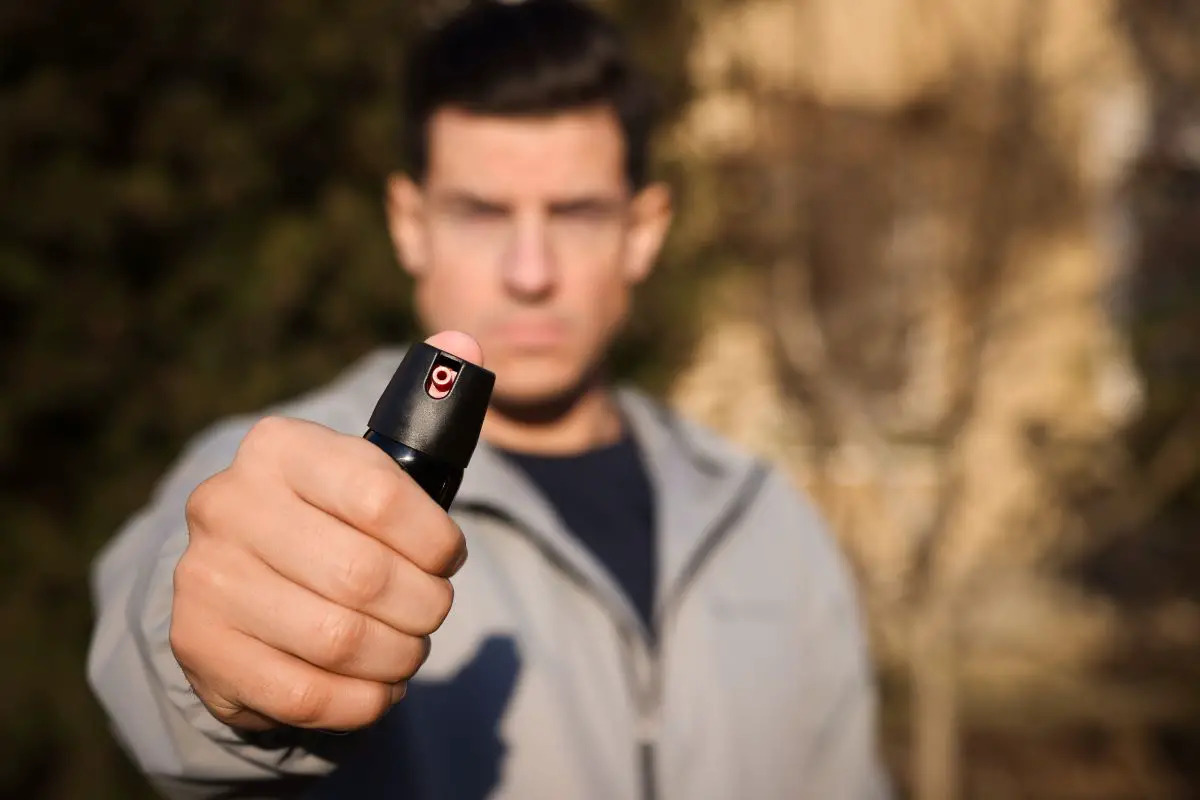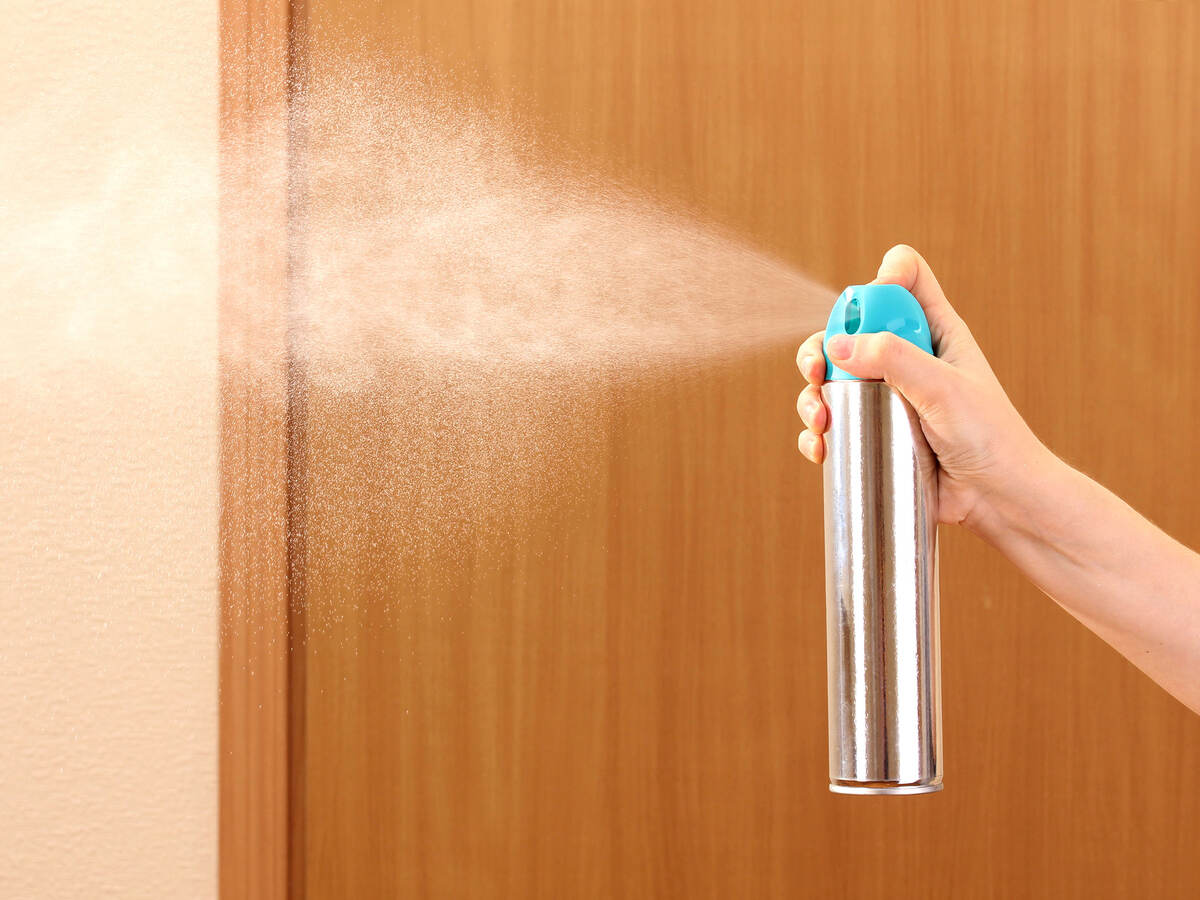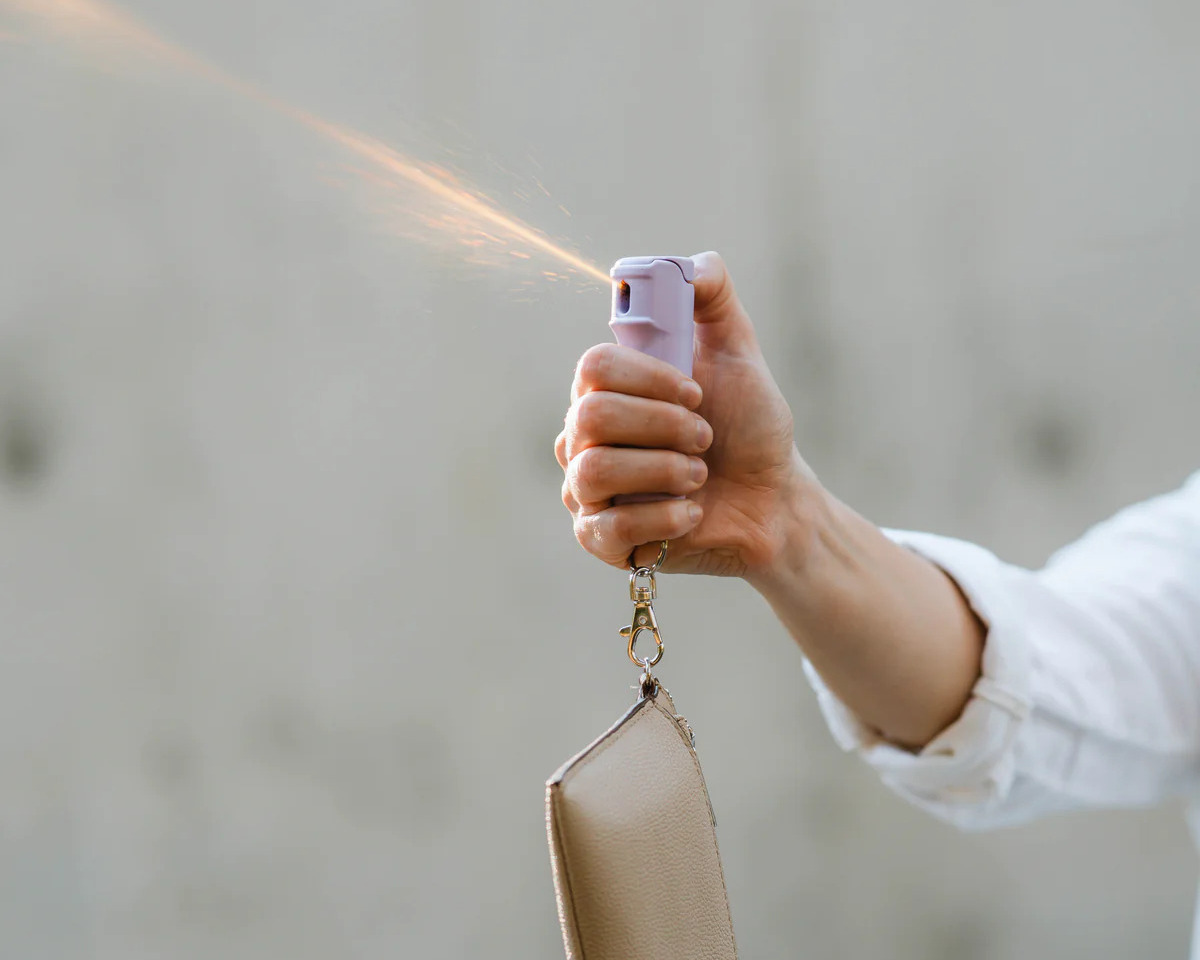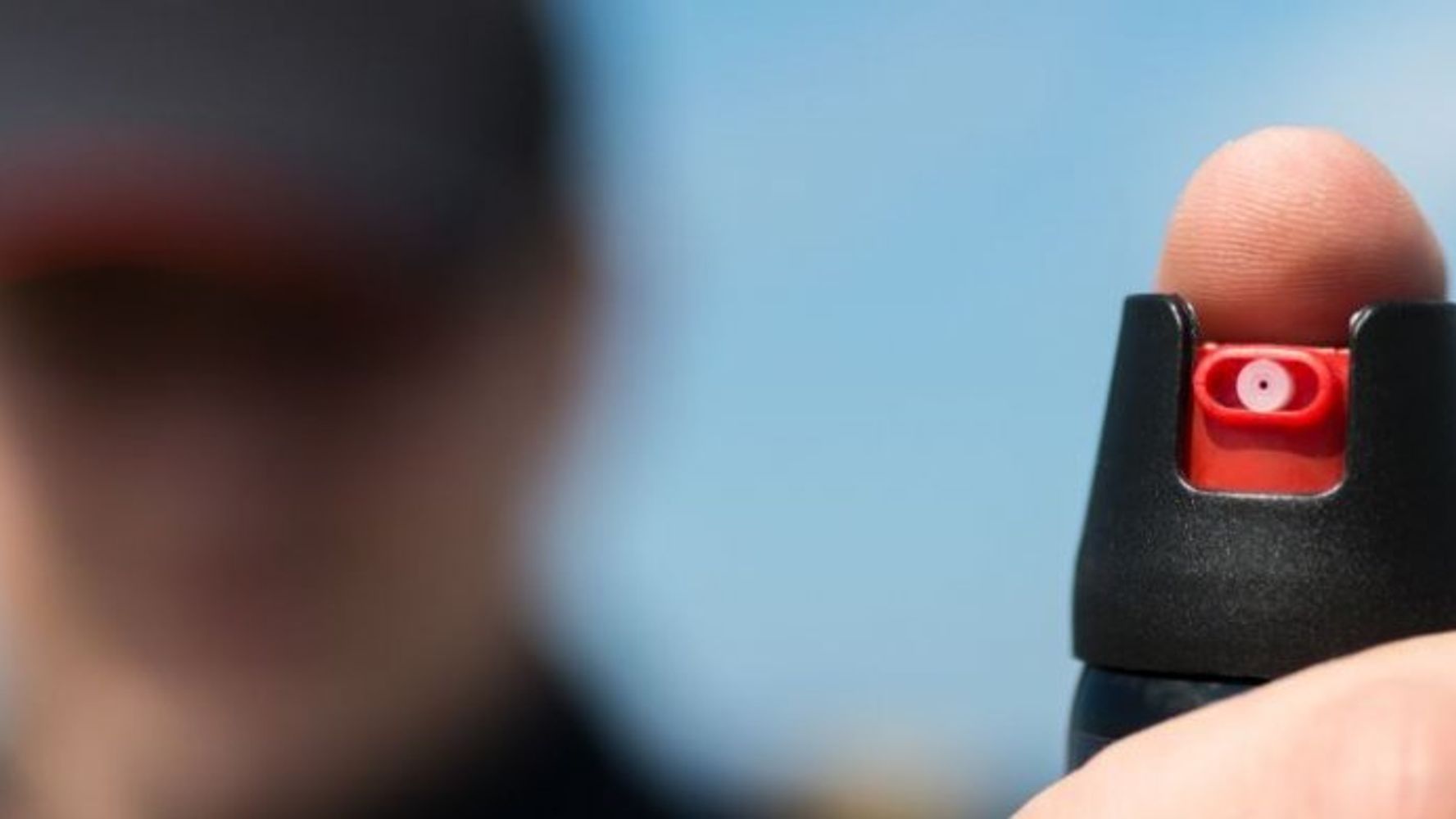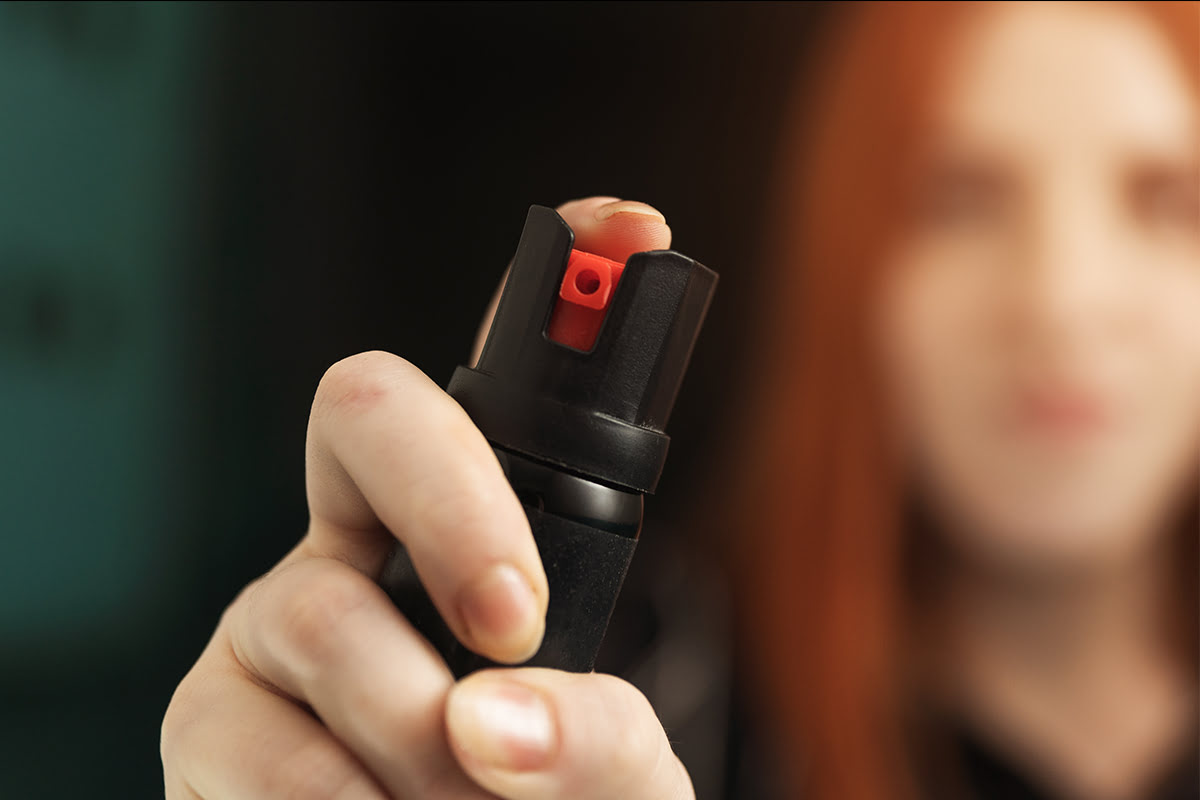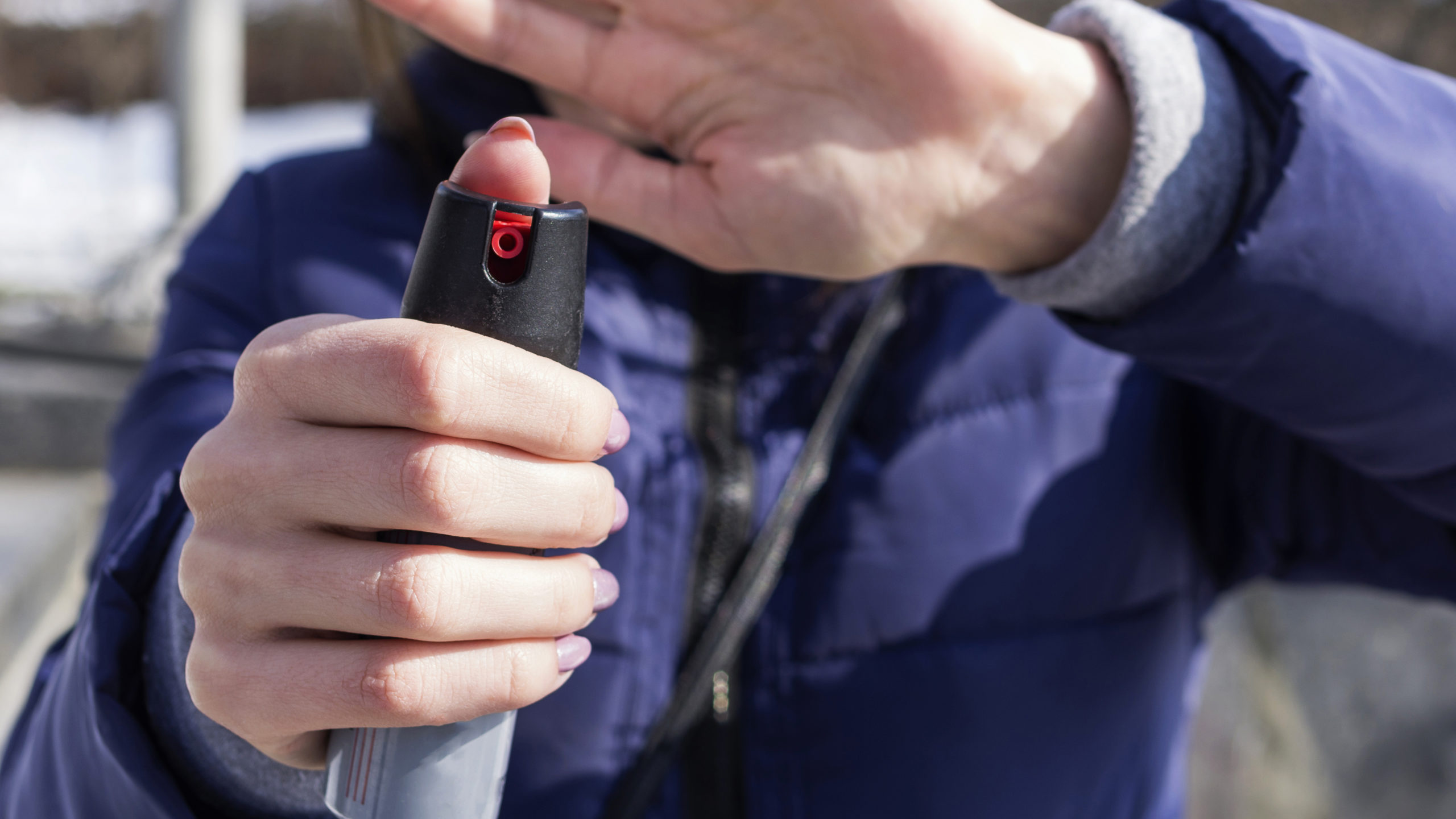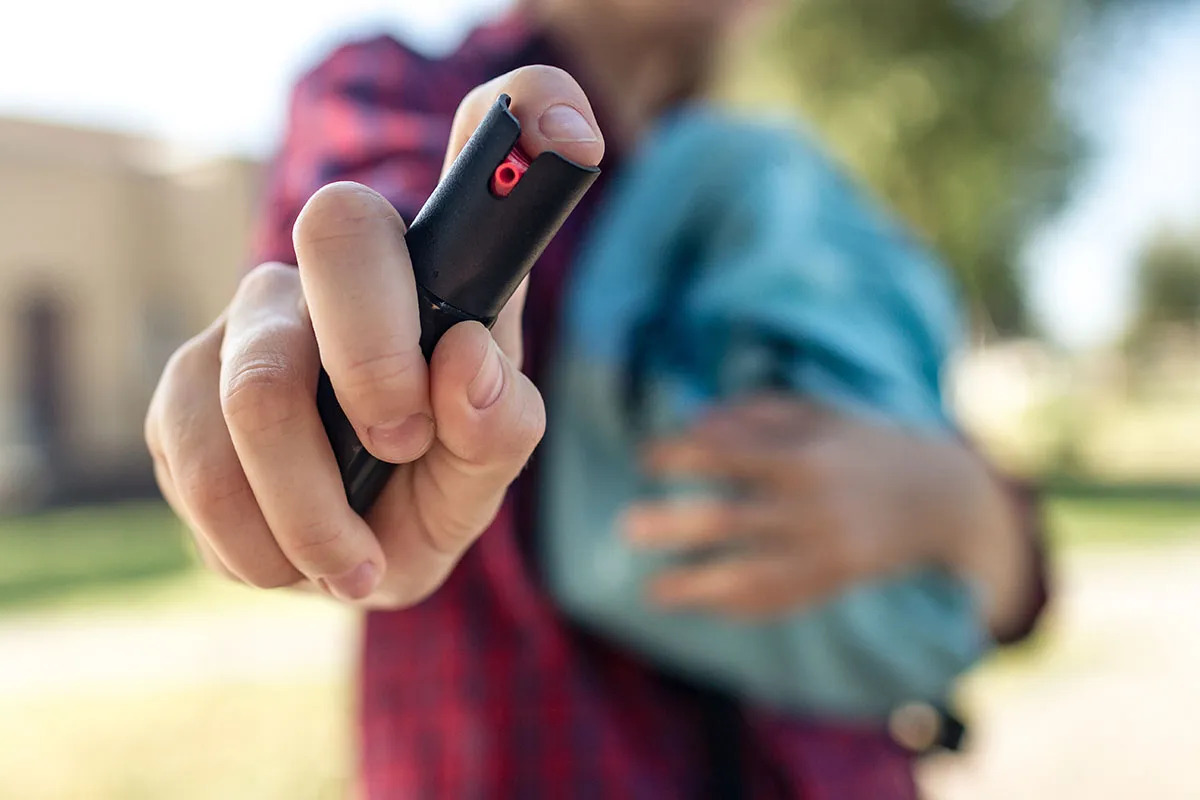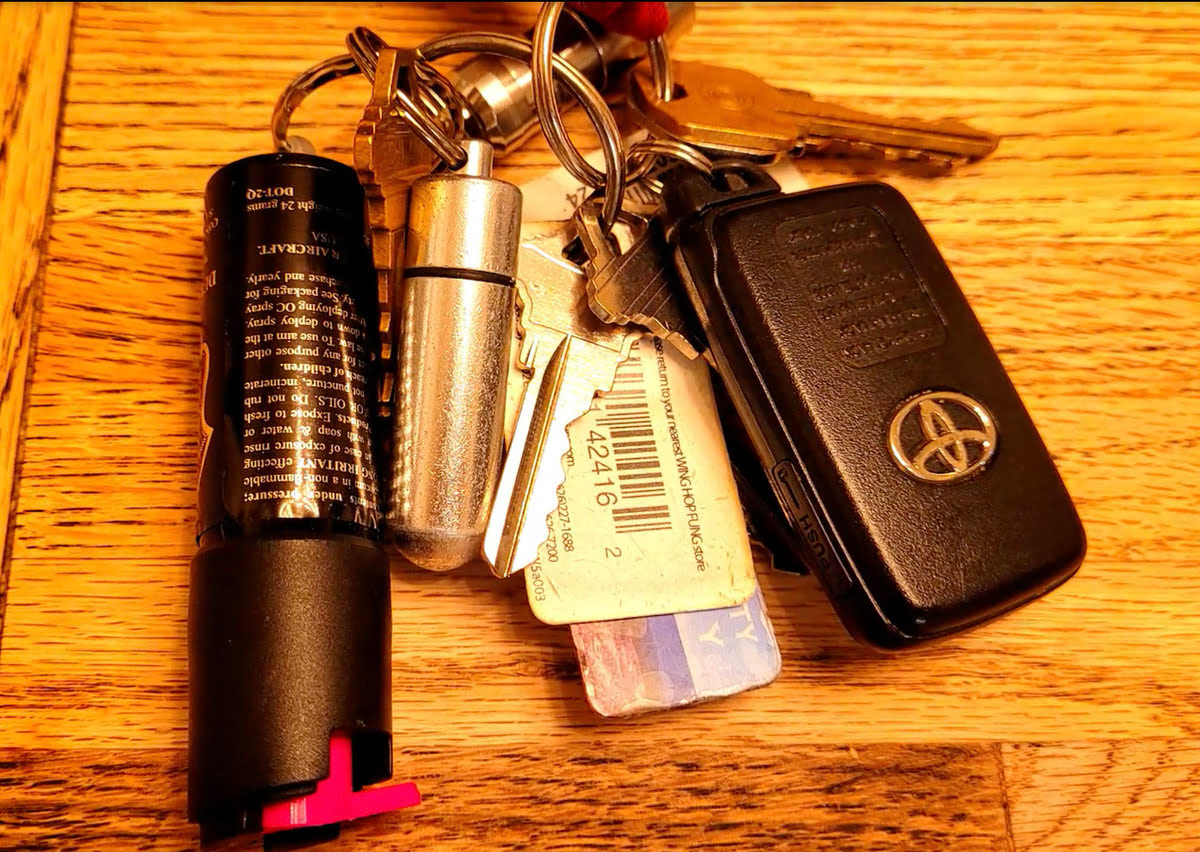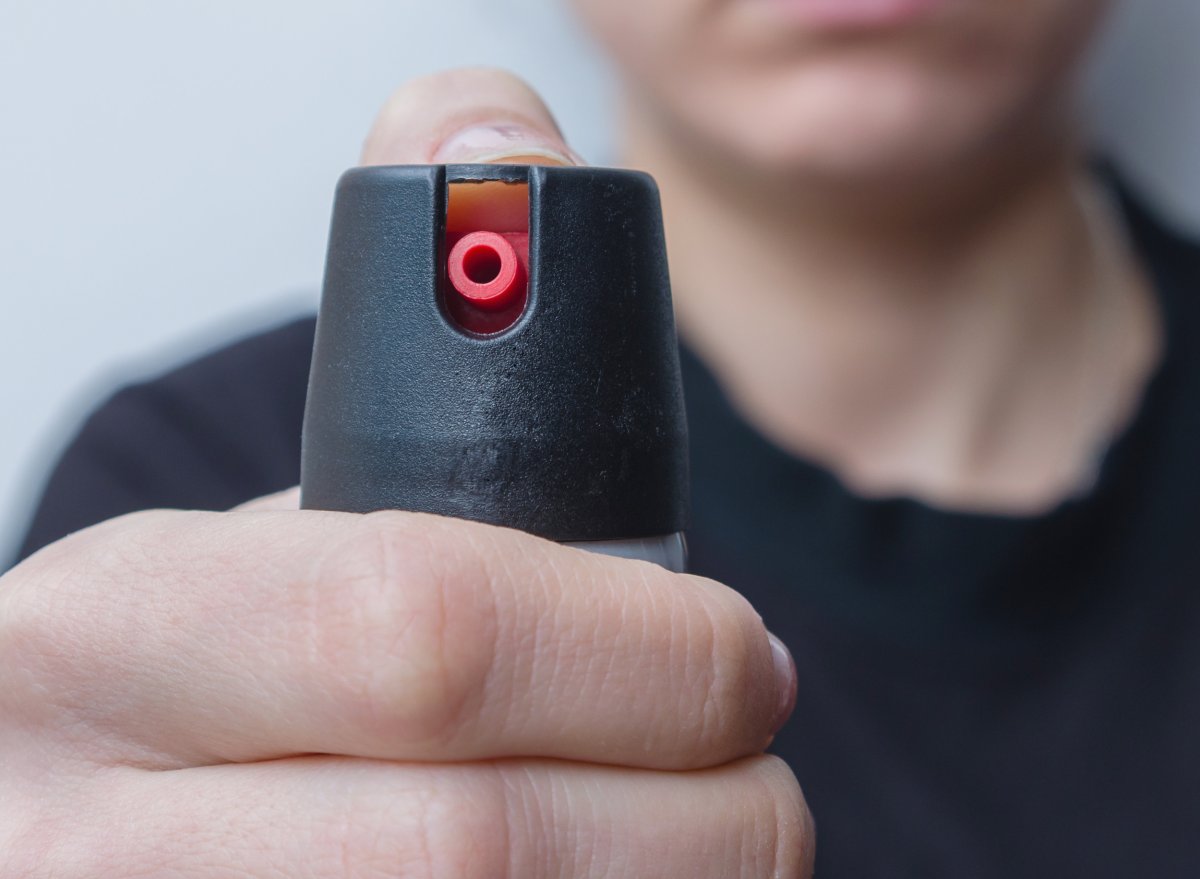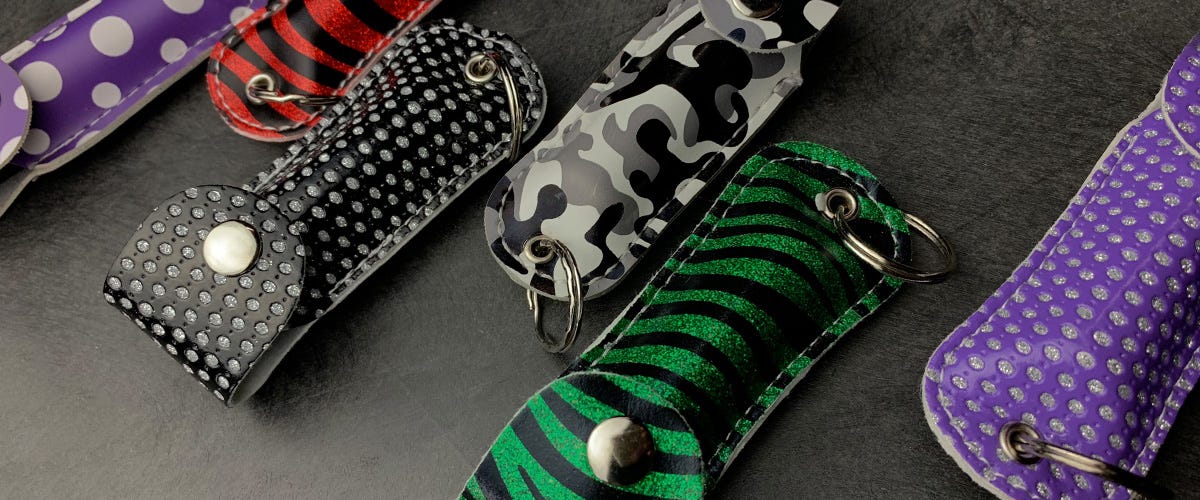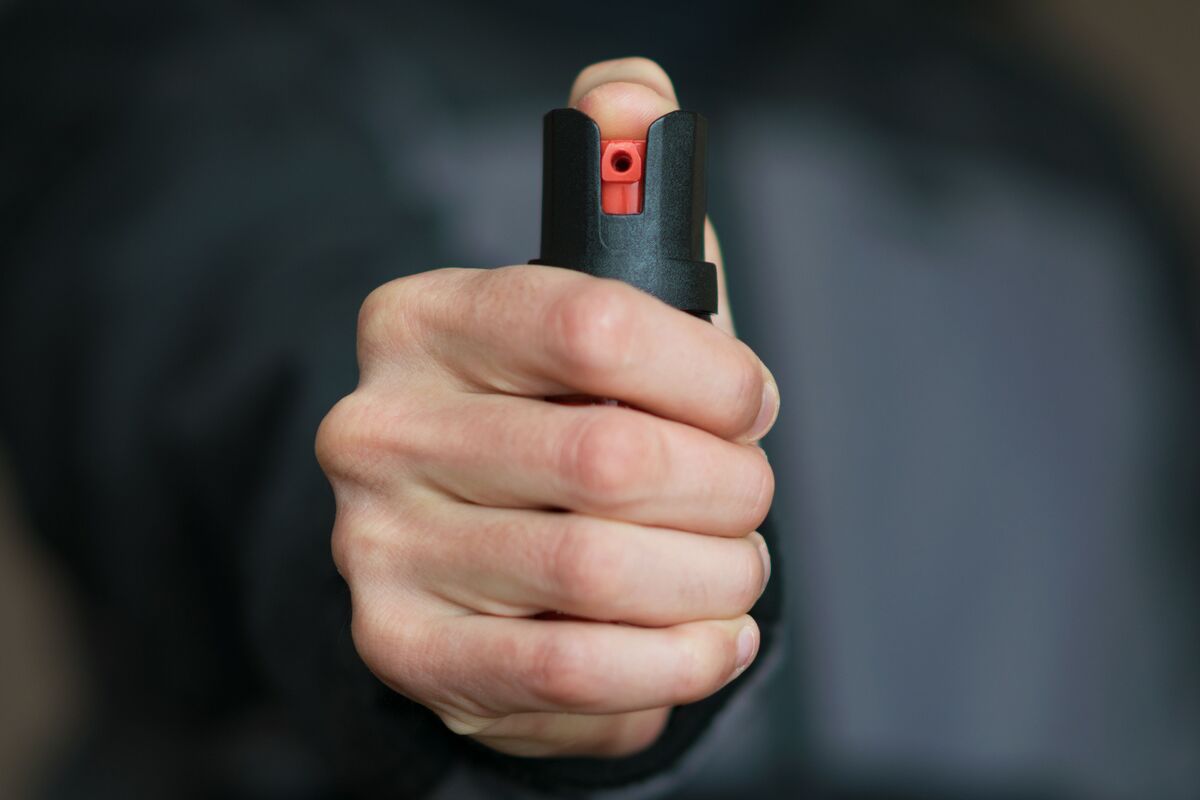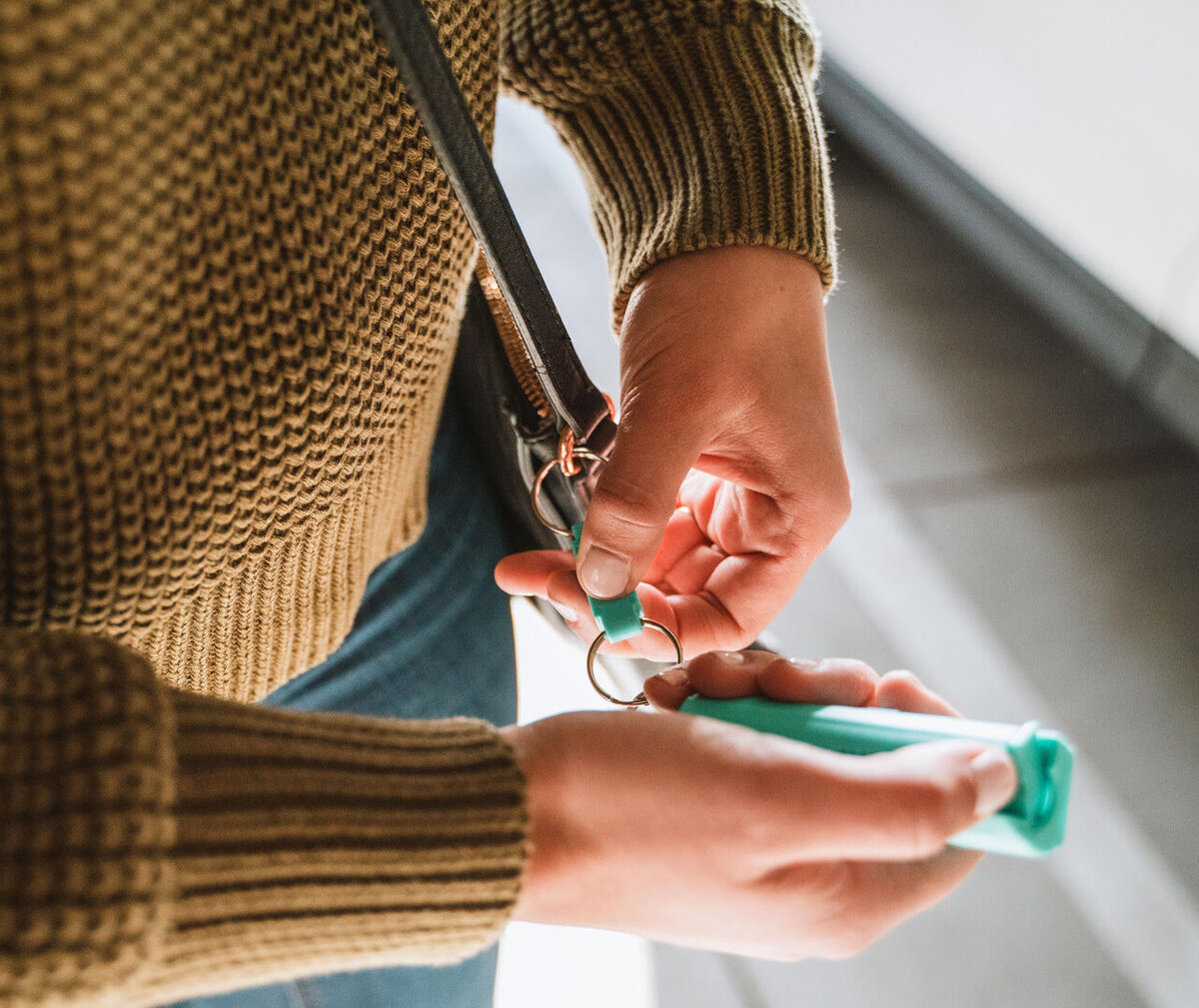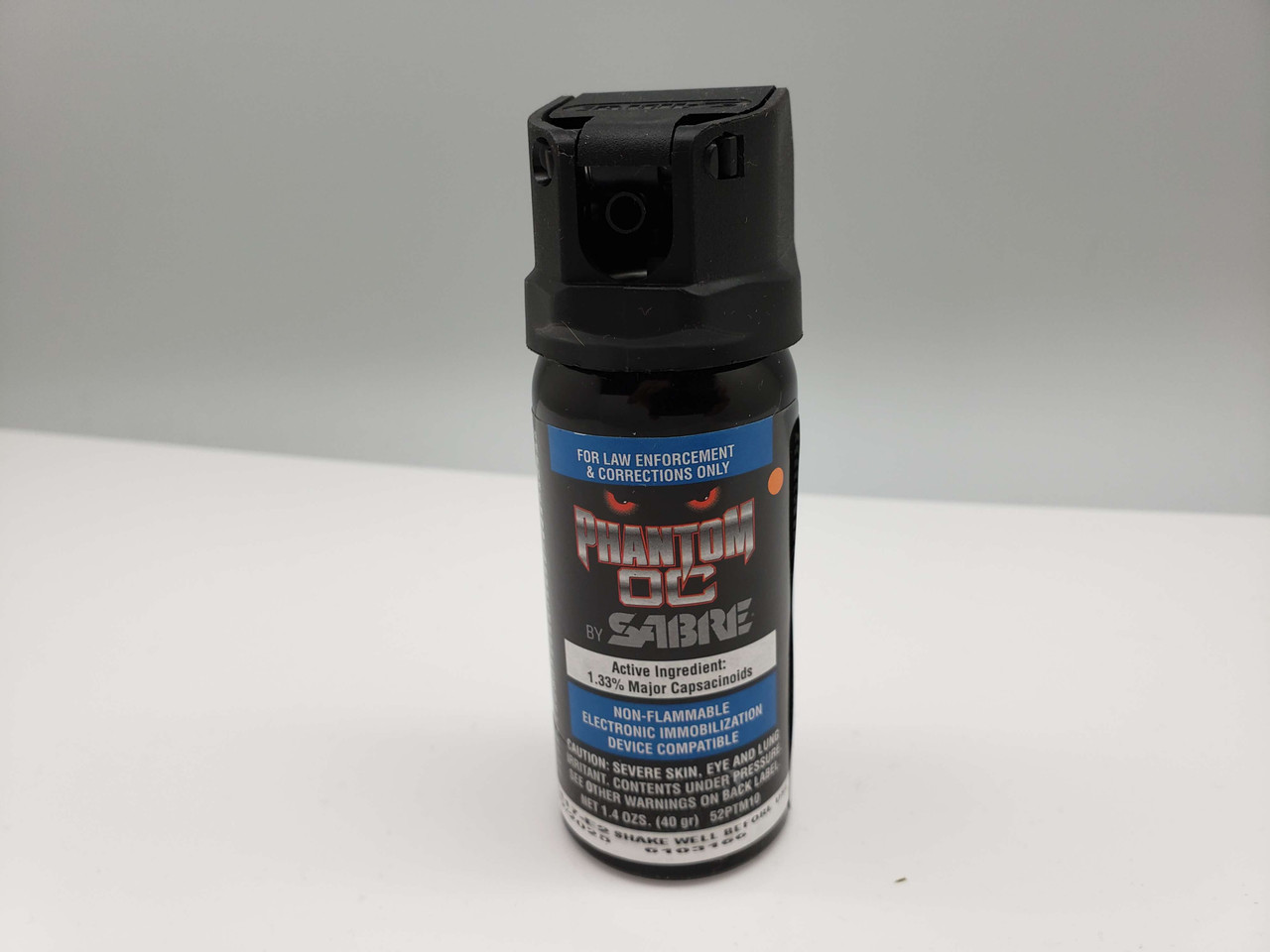Home>Home Security and Surveillance>How Long Does Pepper Spray Stay On Surfaces
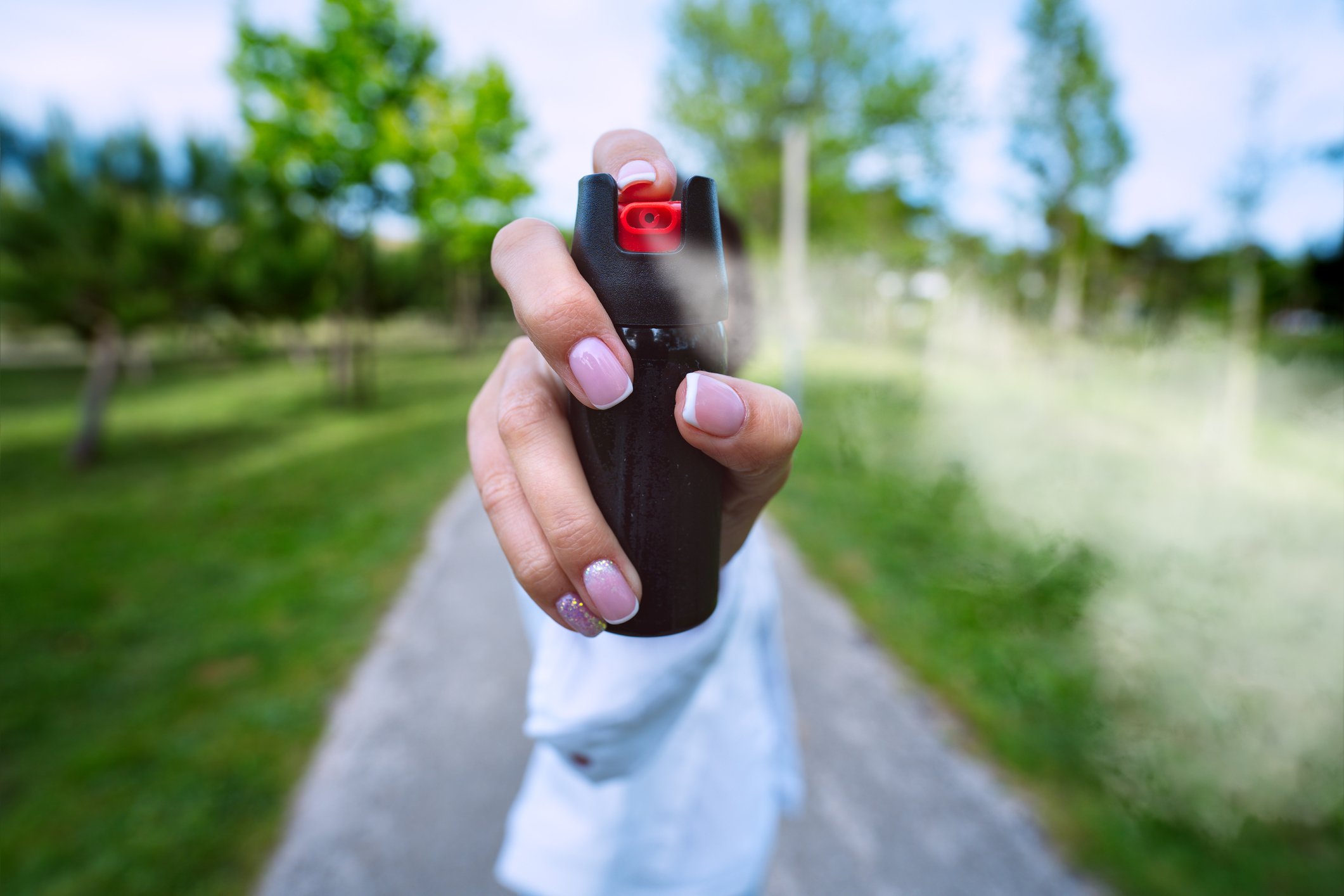

Home Security and Surveillance
How Long Does Pepper Spray Stay On Surfaces
Modified: March 6, 2024
Discover how long pepper spray can stay on various surfaces in your home. Enhance your home security and surveillance with this essential knowledge.
(Many of the links in this article redirect to a specific reviewed product. Your purchase of these products through affiliate links helps to generate commission for Storables.com, at no extra cost. Learn more)
Introduction
Pepper spray has become a popular choice for personal safety and self-defense. It is a non-lethal weapon that can temporarily incapacitate an assailant, providing an opportunity to escape from a dangerous situation. However, one common question that arises when it comes to pepper spray is how long it can stay on surfaces.
Pepper spray, also known as OC spray (oleoresin capsicum), is a chemical compound derived from chili peppers. It contains an active ingredient called capsaicin, which is responsible for its strong irritant properties. When sprayed onto an individual, it causes temporary pain, inflammation, and deters the attacker by impairing their vision and respiratory system.
The duration for which pepper spray stays on surfaces depends on various factors, including the type of spray, the type of surface, and environmental conditions. It is important to understand these factors in order to effectively clean and remove pepper spray residue from different surfaces.
In this article, we will explore the factors that affect the duration of pepper spray on surfaces, the types of surfaces and their impact on pepper spray longevity, the environmental factors that influence its persistence, and the proper cleaning methods to remove pepper spray residue. We will also discuss safety precautions that should be taken when dealing with pepper spray.
It is crucial to note that pepper spray should only be used in self-defense situations and in accordance with the law. It is always recommended to check your local regulations regarding the possession and use of pepper spray.
Now, let’s delve into the details of how long pepper spray can stay on surfaces and how to effectively deal with its residue.
Key Takeaways:
- Pepper spray can stay on surfaces for varying durations, affected by factors like spray type, surface material, and environmental conditions. Prompt and proper cleaning is crucial for effective removal.
- Safety precautions, such as wearing gloves and ensuring ventilation, are essential when dealing with pepper spray residue. Understanding its impact on different surfaces helps in effective cleaning.
Read more: How Long Does Pepper Spray Burn
What is pepper spray?
Pepper spray, also known as OC spray or oleoresin capsicum, is a widely used self-defense tool. It is a non-lethal aerosol spray that contains a chemical compound called capsaicin, derived from chili peppers. When sprayed onto an individual, it causes immediate irritation and inflammation on the skin, eyes, and respiratory system, temporarily incapacitating the attacker.
Pepper spray is available in various forms, including handheld spray canisters, keychain units, and even concealed devices. These compact and easily accessible containers make pepper spray a popular choice for people looking to enhance their personal safety.
The active ingredient in pepper spray, capsaicin, is a potent irritant that affects the sensory nerves, specifically those responsible for pain and inflammation. When it comes into contact with the eyes, it causes intense stinging, tearing, and temporary blindness. Inhalation of pepper spray can lead to coughing, difficulty breathing, and choking sensations.
The effects of pepper spray are temporary and typically last between 30 minutes to an hour, depending on various factors. During this time, the individual may experience significant discomfort and impaired vision, allowing them to escape from a dangerous situation.
It is important to note that pepper spray is a self-defense tool and should be used responsibly. Misuse or use without proper justification can have legal consequences. Therefore, it is crucial to be aware of local laws and regulations regarding the possession and use of pepper spray.
Pepper spray is often used by law enforcement agencies, security personnel, and individuals seeking personal protection. Its effectiveness lies in its ability to provide an immediate and non-lethal means of deterring an attacker, giving the victim time to get to safety or seek help.
In the next sections, we will further explore how pepper spray works, the factors that affect its duration on surfaces, and the appropriate cleaning methods to remove its residue. Understanding these aspects of pepper spray can help you make informed decisions about its use and maintenance.
How does pepper spray work?
Pepper spray is an incredibly effective self-defense tool due to the way it affects the human body. It works by targeting the sensory and respiratory systems, causing temporary incapacitation and giving the user an opportunity to escape a dangerous situation.
When pepper spray is sprayed onto an individual, its active ingredient, capsaicin, immediately comes into contact with the skin, eyes, and mucous membranes. Capsaicin is a powerful irritant that activates the pain receptors in the body, leading to intense discomfort.
The eyes are particularly vulnerable to the effects of pepper spray. Upon contact, capsaicin causes the eyes to swell, tear up profusely, and experience a burning sensation. This results in temporary blindness, disorienting the attacker and impairing their ability to pursue their intended victim.
In addition to affecting the eyes, pepper spray also impacts the respiratory system. When the spray is inhaled, it irritates the mucous membranes in the nose, throat, and lungs. This leads to coughing, shortness of breath, and a feeling of choking or suffocation. The respiratory effects further incapacitate the assailant, making it difficult for them to pursue their intended victim.
The intensity and duration of the effects depend on several factors, such as the concentration of capsaicin in the spray, the amount used, and the individual’s sensitivity to the irritant. Higher concentrations of capsaicin typically result in more severe and longer-lasting effects.
It’s important to note that pepper spray is not without limitations. While it is highly effective in most situations, it may have reduced effectiveness against individuals who are under the influence of drugs or alcohol. Additionally, some individuals may have a higher tolerance to the effects of pepper spray, which can diminish its effectiveness.
The effects of pepper spray are temporary, typically lasting between 30 minutes to an hour. During this time, the individual sprayed with pepper spray will experience significant discomfort, giving the victim an opportunity to escape or seek help.
It’s crucial to remember that pepper spray should only be used in self-defense situations, and one should always prioritize personal safety and the safety of others. Understanding how pepper spray works can help users make informed decisions and react appropriately in potentially dangerous encounters.
In the next sections, we will explore the factors that affect the duration of pepper spray on surfaces, its impact on different types of surfaces, and precautions to be taken when dealing with pepper spray residues.
Factors affecting the duration of pepper spray on surfaces
The duration for which pepper spray can stay on surfaces can vary depending on several factors. Understanding these factors is crucial for effectively cleaning and removing pepper spray residue from different surfaces. Here are some key factors to consider:
1. Type of spray: Different types of pepper sprays have varying formulations and concentrations of capsaicin. The potency of the spray can influence how long it remains on surfaces. Higher concentrations of capsaicin can result in longer-lasting effects.
2. Type of surface: The material and texture of the surface sprayed can affect how the pepper spray adheres. Porous surfaces, such as fabric or carpet, tend to absorb the spray, making it more challenging to remove. Smooth and non-porous surfaces, such as glass or metal, allow the spray to sit on the surface, making it easier to clean.
3. Temperature and humidity: Environmental conditions play a role in the persistence of pepper spray. Higher temperatures and humidity levels can accelerate the evaporation of the carrier agents in the spray, reducing its longevity on surfaces. Cooler temperatures and lower humidity may prolong the duration of the spray.
4. Application technique: The way pepper spray is applied can impact its coverage and adherence to surfaces. If the spray is directed with force and properly aimed, it is more likely to reach its intended target and stick to the surface. On the other hand, if the spray is dispersed inconsistently or from a distance, it may disperse in the air, reducing its presence on surfaces.
5. Duration of exposure: The length of time the pepper spray remains in contact with a surface can affect its persistence. Longer exposure time allows the chemicals to penetrate and bond with the surface more firmly, making it harder to remove.
6. Cleaning methods: The cleaning techniques used to remove the pepper spray residue can also influence its duration on surfaces. Promptly and properly cleaning the affected area can reduce the time it lingers. However, improper cleaning techniques or using reactive substances may exacerbate the problem and prolong the residual effects.
It is important to note that pepper spray residues should be dealt with caution to avoid accidental contact and further spreading. Taking the appropriate safety precautions, such as wearing gloves and ensuring proper ventilation, is essential during the cleaning process.
By considering these factors, you can better understand how long pepper spray might stay on different surfaces. In the next sections, we will delve into specific types of surfaces and their impact on pepper spray longevity, as well as environmental factors that can influence its persistence.
Types of surfaces and their impact on pepper spray longevity
Pepper spray can adhere differently to various types of surfaces, impacting its duration and ease of removal. Understanding how pepper spray interacts with different surfaces is crucial for effectively cleaning and eliminating its residue. Here are some common types of surfaces and their impact on pepper spray longevity:
1. Porous surfaces: Porous surfaces, such as fabric, upholstery, or carpet, can absorb pepper spray, making it more challenging to remove. When sprayed onto porous surfaces, the capsaicin and carrier agents can penetrate deep into the fibers, prolonging its presence. In such cases, immediate action is necessary to prevent the stain from setting and to minimize its long-term effects.
2. Non-porous surfaces: Non-porous surfaces, such as glass, plastic, or metal, do not absorb pepper spray as readily as porous materials. The spray tends to sit on the surface, making it easier to clean. However, the smoothness of the surface may allow the spray to spread over a larger area, requiring thorough cleaning to ensure complete removal.
3. Painted surfaces: Pepper spray can cause damage to painted surfaces, particularly if they are porous or have a matte finish. The capsaicin and carrier agents can react with the paint, leading to discoloration, staining, or even deterioration of the paintwork. Prompt cleaning and appropriate cleaning agents are necessary to minimize the effects on painted surfaces.
4. Wood surfaces: Wood surfaces, whether treated or untreated, can absorb pepper spray and retain its residue. The porous nature of wood allows the spray to penetrate into the grains, making it difficult to remove. Special care should be taken when cleaning wood surfaces to avoid further damage or moisture absorption.
5. Outdoor surfaces: Surfaces exposed to the elements, such as concrete, pavement, or brick, can retain pepper spray residue for a longer period. The rough texture of these surfaces can trap the spray, making it challenging to clean. Additionally, weather conditions and natural elements may further impact the duration of the spray on outdoor surfaces.
Regardless of the type of surface, it is important to act promptly when dealing with pepper spray residue. The longer the residue remains, the more it can adhere and become harder to remove. Using appropriate cleaning techniques, such as blotting rather than rubbing, can prevent the spread of the spray and minimize its impact.
It is also worth mentioning that some surfaces may require more specialized cleaning methods or professional assistance to effectively remove pepper spray residue. In such cases, consulting a professional cleaning service may be the best course of action.
Understanding the impact of different surface types on pepper spray longevity allows for better preparation and appropriate cleaning measures. In the next section, we will explore environmental factors that can affect the persistence of pepper spray on surfaces.
After being sprayed, pepper spray can remain on surfaces for several days to weeks. It is important to clean affected areas thoroughly to remove the residue and prevent accidental exposure.
Read more: How Long Does Pepper Spray Effects Last
Environmental factors and their effect on pepper spray persistence
Environmental conditions play a significant role in the persistence of pepper spray on surfaces. Various factors, such as temperature, humidity, and airflow, can influence how long the residue lingers and how easily it can be removed. Understanding these environmental factors is crucial when dealing with pepper spray residue. Here are some key factors and their effects:
1. Temperature: Temperature can affect the evaporation rate of the carrier agents in pepper spray. Higher temperatures can accelerate evaporation, leading to a quicker dissipation of the spray. Conversely, cooler temperatures can slow down evaporation, prolonging the presence of the residue on surfaces. Extreme heat or cold can have adverse effects on certain materials, so it’s important to consider the temperature range when dealing with pepper spray residues.
2. Humidity: Humidity levels in the surrounding environment can impact the longevity of pepper spray residue. Higher humidity can increase moisture content in the air, potentially slowing the drying process of the spray. This can lead to a longer duration of the residue on surfaces. Lower humidity levels, on the other hand, can promote faster evaporation and reduce the persistence of the spray.
3. Airflow: The presence and direction of airflow can affect the dispersal and movement of pepper spray residue. Strong air currents, such as fans or open windows, can contribute to the spreading of the spray, potentially extending its reach on surfaces. Conversely, limited airflow can result in a more concentrated and localized presence of the residue.
4. Exposure to sunlight: Sunlight exposure can have varying effects on pepper spray residue. Ultraviolet (UV) radiation from sunlight can cause degradation of the chemicals in the spray, potentially reducing its potency over time. However, prolonged exposure to sunlight can also lead to discoloration or staining of surfaces, particularly on materials that are sensitive to UV damage.
5. Rain or water exposure: Water, whether in the form of rain or direct contact, can dilute and spread pepper spray residue. This can potentially make it more challenging to clean and remove from surfaces. Rainfall can also impact outdoor surfaces, causing the residue to be washed away or absorbed into the ground.
Considering these environmental factors is important when assessing the persistence of pepper spray residue. While some factors, such as temperature and humidity, may be beyond our control, taking prompt action and using appropriate cleaning methods can help mitigate the effects of these factors.
In the next section, we will discuss cleaning and removal methods for pepper spray residue, providing guidance on how to effectively deal with its presence on different surfaces.
Cleaning and removing pepper spray from surfaces
Cleaning and removing pepper spray residue from surfaces is essential to minimize its effects and restore the affected area. Prompt and proper cleaning techniques can help mitigate the discomfort and potential damage caused by the spray. Here are some steps to effectively clean and remove pepper spray from different surfaces:
1. Safety first: Before you begin the cleaning process, ensure your own safety by wearing gloves and protective eyewear. Pepper spray residue can still cause irritation, so taking precautionary measures is important.
2. Ventilation: Open windows and ensure proper ventilation in the area where the pepper spray residue is present. This will help dissipate any lingering odors and aid in the drying process.
3. Blot, don’t rub: If the surface is porous, such as fabric or carpet, start by gently blotting the affected area with a clean cloth or paper towel. Avoid rubbing, as it can spread the pepper spray and embed it deeper into the material.
4. Dilute the residue: For non-porous surfaces, like glass or metal, you can use a mild detergent or household cleaner diluted with water. Apply the solution to the surface and gently wipe it with a clean cloth or sponge. Rinse thoroughly with water afterward.
5. Specific surface considerations:
– For painted surfaces, use a mild detergent or soap with a soft sponge to gently clean the area. Avoid abrasive cleansers that may damage the paint. Rinse thoroughly and dry the surface afterward.
– For wood surfaces, use a mild wood cleaner or a mixture of vinegar and water to gently clean the affected area. Wipe with a damp cloth and dry thoroughly to prevent moisture absorption.
– On electronic devices, such as phones or keyboards, use a slightly damp cloth or electronic-safe cleaning wipes to remove the residue, being careful not to damage any sensitive components.
6. Repeat if necessary: Depending on the severity of the pepper spray residue, you may need to repeat the cleaning process several times to ensure complete removal. Always test any cleaning solution on a small, inconspicuous area first to check for any adverse reactions.
7. Dispose of materials properly: After cleaning, dispose of any materials used in the cleaning process, such as paper towels or cloths, in a sealed plastic bag to prevent accidental contact or further spreading of the residue.
8. Seek professional help if needed: In cases where the pepper spray residue is particularly stubborn or on delicate surfaces, it may be best to seek professional cleaning assistance. They have the expertise and proper tools to effectively remove the residue without causing further damage.
Remember, proper cleaning techniques are crucial to ensure the safe and effective removal of pepper spray residue. Taking immediate action and following these steps can help minimize the lingering effects and restore the affected surfaces to their pre-incident state.
In the next section, we will discuss important safety precautions to keep in mind when dealing with pepper spray residue and its removal.
Safety precautions when dealing with pepper spray residue
When it comes to dealing with pepper spray residue, it’s important to prioritize your safety and take necessary precautions. Pepper spray contains irritants that can cause discomfort and potential harm if not handled properly. Here are some safety precautions to keep in mind:
1. Personal protective equipment: Before attempting to clean pepper spray residue, ensure you are wearing appropriate personal protective equipment. This should include gloves made of a material that is resistant to chemicals, such as nitrile or latex, to protect your skin from direct contact with the residue. Consider wearing protective eyewear to shield your eyes as well.
2. Proper ventilation: Make sure the area where you are working is well-ventilated. Open windows or use fans to increase airflow and minimize the concentration of any lingering pepper spray residue or fumes. This will help reduce potential irritation and discomfort during the cleaning process.
3. Avoid touching your face: Throughout the cleaning process, avoid touching your face, especially your eyes and mouth. Even with gloves on, there is still a risk of accidentally transferring residue to sensitive areas.
4. Use caution with clothing or items in contact with pepper spray: If your clothing or any other items come into contact with pepper spray, handle them with care. Avoid contaminating other surfaces or objects by placing them in sealed plastic bags until they can be properly cleaned.
5. Follow cleaning instructions: When cleaning surfaces, follow the instructions provided earlier in this article for the specific type of surface. Use appropriate cleaning solutions and techniques, and avoid using abrasive or reactive substances that may cause further damage or spread the pepper spray residue.
6. Dispose of cleaning materials properly: After cleaning, dispose of any used cleaning materials, such as gloves, towels, or wipes, in a sealed plastic bag. This will help prevent accidental contact and further spreading of the residue.
7. Wash hands thoroughly: Once you have finished cleaning, thoroughly wash your hands with soap and water to remove any potential residue that may have come into contact with your skin. Avoid touching your face until your hands are clean.
8. Seek medical attention if necessary: If you experience severe or prolonged discomfort, irritation, or any adverse reactions after coming into contact with pepper spray or its residue, seek medical attention immediately.
By following these safety precautions, you can effectively and safely deal with pepper spray residue. Remember, pepper spray is a self-defense tool and should only be used in accordance with the law and in legitimate self-defense situations.
Conclusion
Pepper spray is a popular choice for personal safety and self-defense, providing a non-lethal means of deterring attackers. However, it is important to understand how long pepper spray can stay on surfaces and how to effectively clean and remove its residue.
Factors such as the type of spray, type of surface, temperature, humidity, and airflow can all influence the duration of pepper spray on surfaces. Porous surfaces, such as fabric or carpet, tend to absorb the spray, making it more challenging to remove. Non-porous surfaces, like glass or metal, allow the spray to sit on the surface, facilitating easier cleaning.
Environmental factors, such as temperature, humidity, sunlight exposure, and airflow, also play a role in the persistence of pepper spray residue. These factors can affect how long the residue lingers and how easily it can be removed.
When dealing with pepper spray residue, it is important to take safety precautions, such as wearing gloves and ensuring proper ventilation. Proper cleaning techniques, including blotting, using mild detergents or cleaners, and rinsing thoroughly, can help remove the residue effectively. However, in some cases, seeking professional cleaning assistance may be necessary.
Throughout the process, it is important to prioritize personal safety, avoid touching your face, and properly dispose of any materials used in the cleaning process.
Understanding how pepper spray works, the factors that affect its duration on surfaces, and the proper cleaning techniques can help individuals make informed decisions about their personal safety and confidently deal with pepper spray residue.
Remember, pepper spray should only be used responsibly and in accordance with the law. Prioritize personal safety, know your local regulations, and always consider the potential consequences of its use.
By being knowledgeable about pepper spray and taking appropriate measures to clean and remove its residue, you can maintain a safe and secure environment for yourself and those around you.
Frequently Asked Questions about How Long Does Pepper Spray Stay On Surfaces
Was this page helpful?
At Storables.com, we guarantee accurate and reliable information. Our content, validated by Expert Board Contributors, is crafted following stringent Editorial Policies. We're committed to providing you with well-researched, expert-backed insights for all your informational needs.
